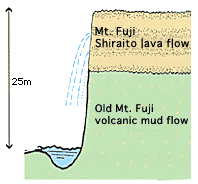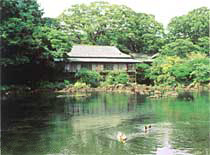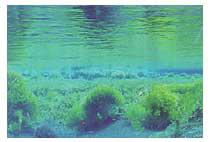|
|
|
Mysterious groundwater and springs : Mt. Fuji's Nature : top
|
||
|
||
Mysterious groundwater and springs |
||
Groundwater supports human life
|
Shiraito Falls
|
|
Freshwater source
Over a long period of time, water soaks through the ground through the multi-layered lava gaps, becoming clean spring and well water that enriches our lives. Wakutama Pond and Shiraito Falls in Fujinomiya City and Kohama Pond and Kakita River at Mishima Springs are good examples of this. |
Kohama Pond
|
|
Wakutama Pond
|
||
Kakita River Spring
|
||
|
{Source: The Nature and Blessings of Mt. Fuji (Shizuoka Prefecture)} |
||
|
For Those Climbing Mt. Fuji : Let's Enjoy Mt. Fuji : Mt. Fuji's Culture : Mt. Fuji's Nature : Japan's Heartland Establishment Aims : Country Code : Mt. Fuji Charter : Membership Information : Mt. Fuji Pins : Top |
||


